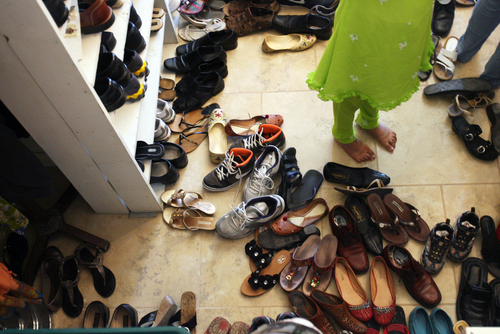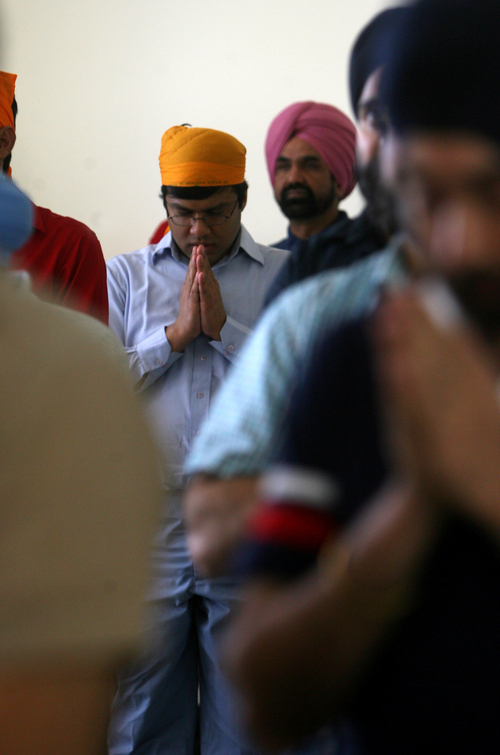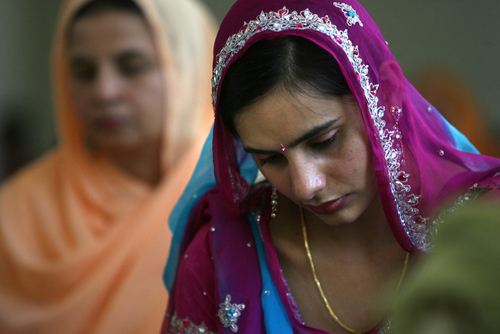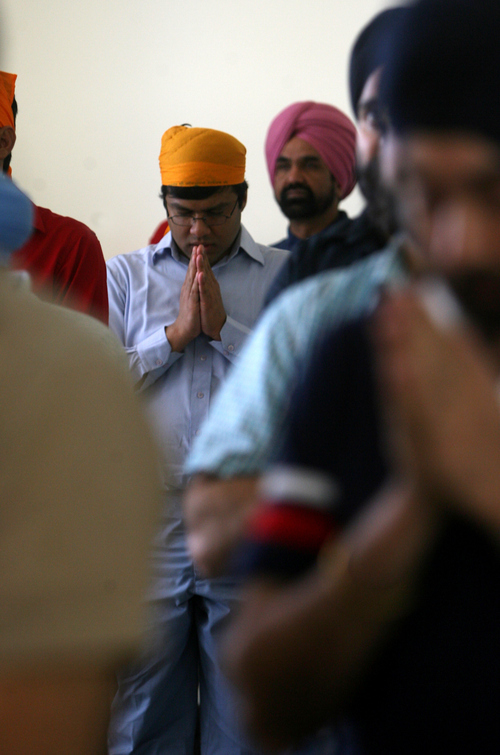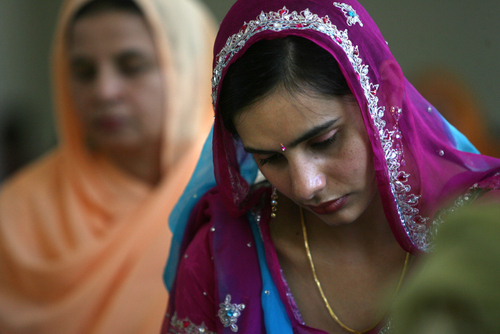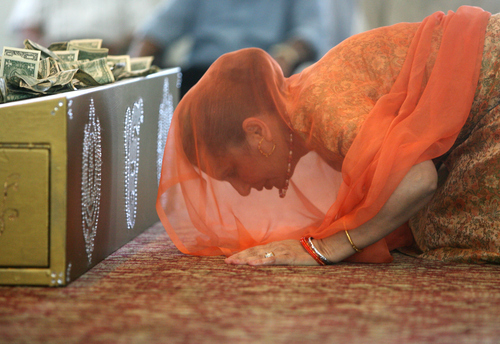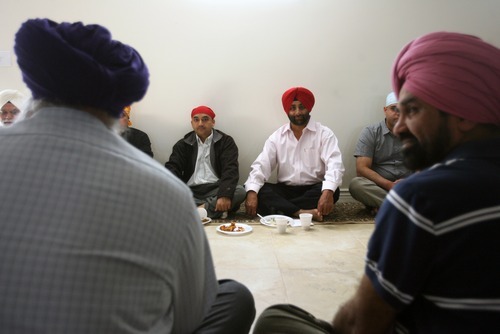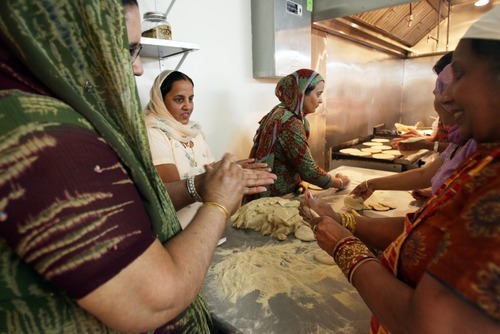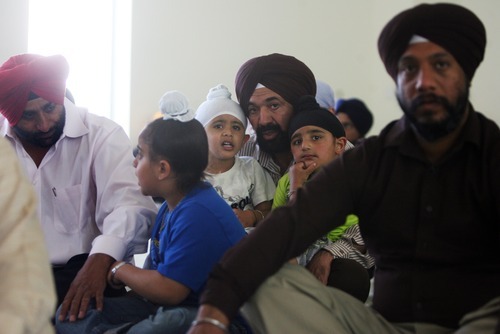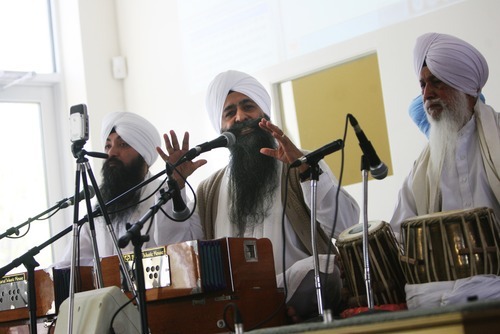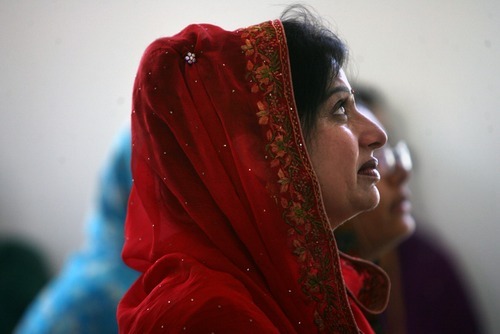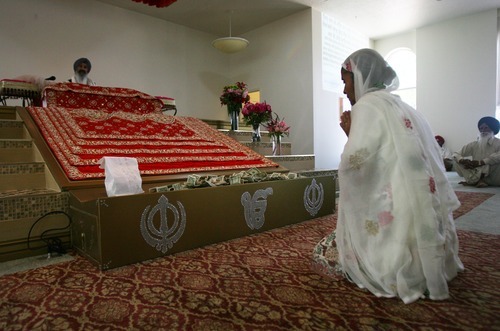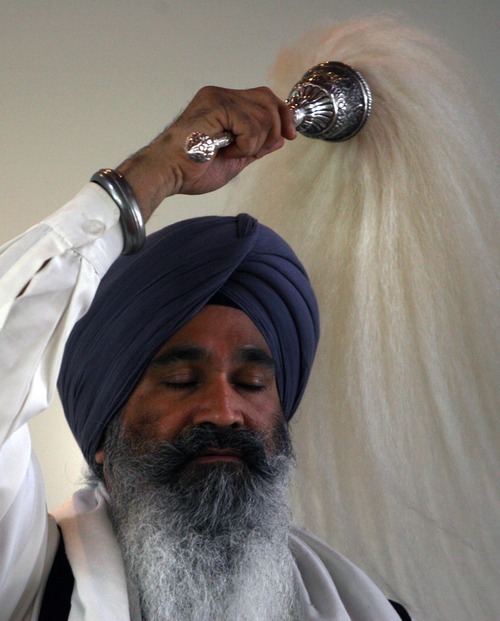This is an archived article that was published on sltrib.com in 2012, and information in the article may be outdated. It is provided only for personal research purposes and may not be reprinted.
You might have seen a whiskered, Middle Eastern-looking man wearing a turban and presumed he was Muslim or that the headgear suggested some kind of high-ranking religious official.
In fact, the man was likely a Sikh, one of more than 27 million worldwide, and his turban and beard were symbols of his faith.
Though some 86 percent of Sikhs live in India, many have emigrated across the globe, especially to English-speaking countries such as the United States, Britain, Canada and Australia. There are an estimated 250 Sikh families in Utah, or about 800 to 1,000 people, and their numbers have been growing since a handful of families arrived in the 1980s.
Sikhs are respected members of the community, worshipping and working alongside their neighbors of all backgrounds. In Utah, they are engineers, executives and entrepreneurs. In fact, local leaders say, Sikhs own more than 50 7-Eleven franchises in the state.
Two weeks ago, the Sikh Temple of Utah in Taylorsville celebrated completion of a major renovation, doubling the sanctuary's size.
On April 22, more than 200 Sikhs gathered there for their Sunday services. Women in headscarves sat on the left side of the green carpet, while men listened on the right with an ornate red strip down the middle. Upfront was a large altar, atop a stair-stepped platform covered in red brocade. A turbaned, white-bearded priest led the worshippers in singing and repeating their sacred prayers, while the verses were displayed in Punjabi and English on two large screens on either side of the room. Afterward, men, women and children sat on the basement floor for a community meal — both a social custom and a religious mandate for Sikhs everywhere.
This week, a group of Buddhist, Hindu, Jain, Sikh religious leaders met for a historic "dharmic" conference at the White House.
Who are the Sikhs?
Sikhism was founded in 15th-century India (now Pakistan) by a man known as Guru Nanak, according to sikhnet.com. It was a time of deep divisions between Hindus and Muslims, which troubled the young man who spent his days discussing religion with holy men from both traditions.
After bathing in a river, Nanak received a divine revelation, Sikhs believe, then went missing for three days. When he reappeared, Nanak had a single message: universal brotherhood.
The future leader then traversed the countryside to spread the news, accompanied by a Muslim musician and a Hindu peasant, a Sikh history says. His sermons were like hymns sung to a lute.
It took several generations and nine guru successors, but eventually Nanak's followers, according to info-sikh.com, formed a "distinct community with its own language, literature, its own religious beliefs and institutions, and its own traditions and conventions."
What are its major teachings?
Sikhs believe in one god, in human equality that transcends all social and religious distinctions, and in divine truth found in every person.
They seek God through meditation. They serve God by serving others, sharing income and resources. They follow a strict code of ethics to earn an honest living.
What and how do they worship?
The central focus of Sikh services is on their holy book, Guru Granth Sahib, or "sayings of the teacher."
The scripture was originally compiled by the fifth guru and completed by the 10th guru, Guru Gobind Singh. After that, the book itself became the movement's "living embodiment."
The scripture contains 5,894 hymns composed by the gurus, according to sikhism.about.com, as well as writings by 15 Hindu and Muslim saints.
"We treat [our holy book] like a king," says P.J. Singh, a Utah Sikh who owns two Indian restaurants with his brother. "It is our guiding star."
Why do Sikh men wear turbans?
As part of their religious commitment, they do not cut their hair, either on their face or head. So they cover their hair with turbans in public or small pieces of fabric for worship. A turban is a "crown of spirituality." Women wear headscarves during services as a sign of respect. Both men and women remove their shoes during worship.
Are there other visible symbols of the faith?
Yes. Sikks have four additional items they wear or carry to signify their identity and commitment:
• A wooden comb as a "symbol of cleanliness."
• A "specifically made cotton underwear" as a symbol of purity.
• A steel wristband, signifying "bondage to truth and freedom from every other entanglement."
• A small sword or dagger to represent their defense of truth.
How does the dagger requirement work at schools and airports?
Because the knife is ceremonial, small and mostly dull-edged, some schools — including at least one Michigan district — have allowed young male Sikhs to carry them. At airports, most Sikhs would check their dagger, known as a kirpan, but if they forget, security officials are trained to treat the carrier with respect. Also, airport officials typically use metal detectors to check for weapons under a turban and only ask for removal is such is detected.
Why do Sikhs serve meals at their temples?
Hospitality toward the poor, the stranger, the traveler and the needy is a Sikh requirement. Thus, their temples have separate kitchens, stocked with food and volunteers, ready to help anyone who asks.
"No matter what country, or how big or small the temple," says Tarlochan Singh Gill, a businessman and secretary of Utah's Sikh Temple, "our vegetarian kitchens are always open."
At the faith's massive Golden Temple in India, volunteers serve 200,000 to 250,000 free meals every day, Gill says. On big holidays, that number doubles or even triples.
Do Sikhs have any initiation rites?
Yes, a kind of baptism. Among other ritual elements such as answering questions, water is sprinkled over the eyes, mouth, body as well as drunk to signify new life and purification.
Why do all Sikh men have the name, Singh, and Sikh women have the name Kaur?
One of the main issues that the first preacher, Guru Nanak, had with Hinduism was its caste system. Because one could tell a person's caste partly by the name, Sikhs chose to give everyone the same last name to publicly express their equality before God.
It's the same reason, Gill says, why everyone sits on the floor for worship and at meals.
"Sitting on the same ground signifies that we are equal," he says. "Whether it is beggars and kings, President [Barack] Obama or the guy cleaning the toilet, God loves us all equally."
Sources: sikhnet.com, info-sikh.com, sikhism.about.com
Facebook.com/religiongal
Twitter:@religiongal —
Where Sikhs worship
Sikh Temple of Utah • 4897 S. Redwood Road, Taylorsville —
Photo gallery
O To view more photos from services at Utah's Sikh Temple, go to › http://www.sltrib.com.


